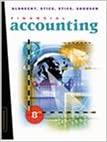Answered step by step
Verified Expert Solution
Question
1 Approved Answer
Walmart-Cost Leadership Strategy Founded by Sam Walton, the first Wal-Mart store opened in Rogers, Arkansas (USA), in 1962 Seventeen years later, annual sales topped $1


Walmart-Cost Leadership Strategy Founded by Sam Walton, the first Wal-Mart store opened in Rogers, Arkansas (USA), in 1962 Seventeen years later, annual sales topped $1 billion. By the end of January 2002, Wal-Mart Stores, Inc. (Wal-Mart), was the world's largest retailer, with $218 billion in sales. Wal-Mart's winning strategy in the U.S. was based on selling branded products at low cost. Each week, about 100 million customers visited a Wal-Mart store somewhere in the world. The company employed more than 1.3 million associates (Wal-Mart's term for employees) worldwide through more than 3,200 stores in the United States and more than 1,100 units in Mexico, Puerto Rico, Canada, Argentina, Brazil, China, Korea, Germany, and the United Kingdom. In 2001, Fortune magazine named Wal-Mart the third most admired company in America, and the Financial Times and PricewaterhouseCoopers ranked it as the eighth most admired company in the world. The following year, Wal-Mart was named number one on the Fortune 500 list and was presented with the Ron Brown Award for Corporate Leadership, a presidential award that recognized companies for outstanding achievement in employee and community relations. Wal-Mart enjoyed a 50 percent market share position in the discount retail industry. Procter & Gamble, Clorox, and Johnson & Johnson were among its nearly 3,000 suppliers. Though Wal-Mart may have been the top customer for consumer product manufacturers, it deliberately ensured it did not become too dependent on any one supplier, no single vendor constituted more than 4 percent of its overall purchase volume. About 85 percent of all the merchandise sold by Wal-Mart was shipped through its distribution system to its stores. (Competitors supplied to their retail outlets on average less than 50 percent of the merchandise through their own distribution centers.) The company owned a fleet of more than 3,000 trucks and 12,000 trailers. (Most competitors outsourced trucking.) Wal-Mart had implemented a satellite network system that allowed information to be shared between the company's wide network of stores, distribution centers, and suppliers. The system consolidated orders for goods, enabling the company to buy full truckload quantities without incurring the inventory costs. Wal-Mart's value proposition can be summed up as "everyday low prices for a broad range of goods that are always in stock in convenient geographic locations." It is those aspects of the customer experience that the company over-delivers relative to competitors. Under- performance on other dimensions, such as ambiance and sales help, is a strategic choice that generates cost savings, which fuel the company's price advantage. If the local mom-and-pop hardware store has survived, it also has a value proposition: convenience, proprietors who have known you for years, free coffee and doughnuts on Saturday mornings, and so on. REQUIRED: a) Fully discuss all the activities that have allowed Wal-Mart to achieve a cost leadership advantage. (10 Marks) b) Describe the risks associated with Wal-Mart's use of the cost leadership strategy. (10 Marks)
Step by Step Solution
There are 3 Steps involved in it
Step: 1

Get Instant Access to Expert-Tailored Solutions
See step-by-step solutions with expert insights and AI powered tools for academic success
Step: 2

Step: 3

Ace Your Homework with AI
Get the answers you need in no time with our AI-driven, step-by-step assistance
Get Started


